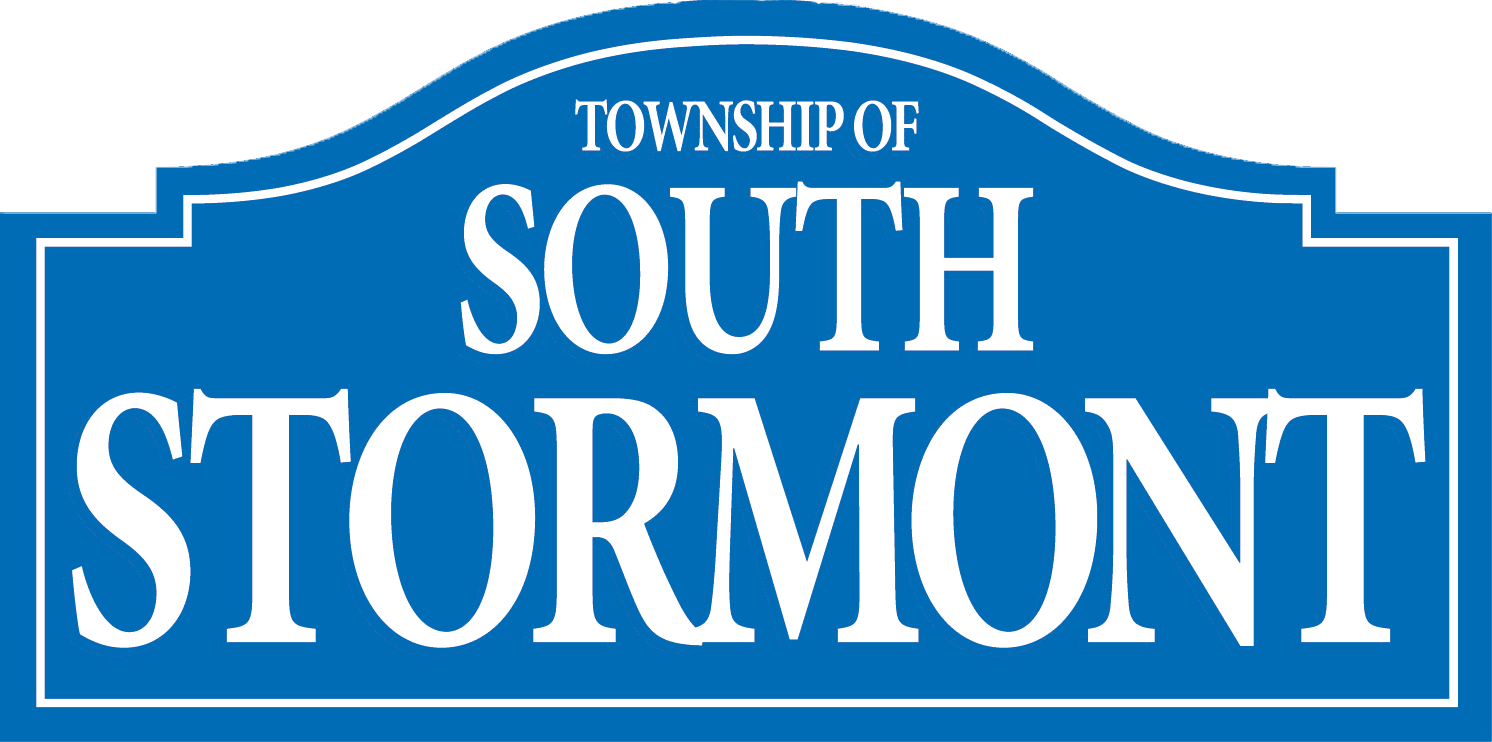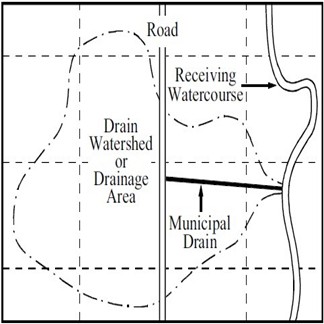To initiate a municipal drain project, submit a Petition for Drainage to the Municipality. To be a valid petition, the petition must be signed by:
- The majority of property owners in the area that requires drainage, or
- The property owners that represent at least 60% of the land in the area requiring drainage, or
- The engineer, road superintendent or person having authority over a road requiring drainage
The "area requiring drainage" is the area within a watershed with a drainage problem or need for drainage outlet - and is not the full watershed.

 Basic Municipal Drain Example
Basic Municipal Drain Example

